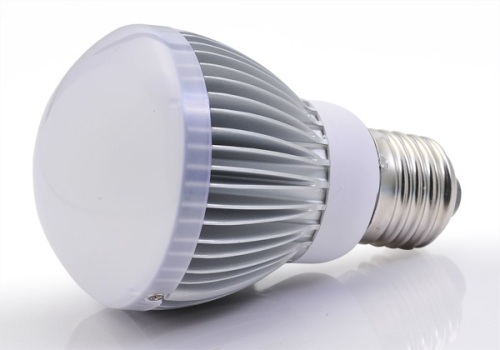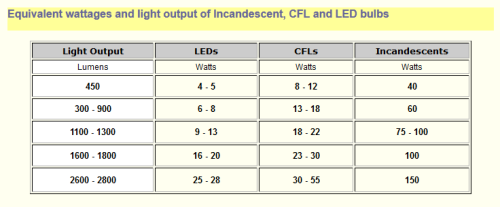Using LED bulbs for interior lighting offers numerous advantages over Incandescent and CFL bulbs: extended lifetime, resistance to breakage, rapid cycling, compact size, and no infrared or ultraviolet emission. They are economical, averaging between 30,000 to 50,000 hours of light compared with the 9,000 hours of CFLs, and 1,000 hours of incandescent bulbs. Because of this, you've decided to replace all your bulbs with LEDs and connect them to dimmer circuits for extra home ambiance. Unfortunately, the pairing of LEDs and a dimmer circuit is not that simple, and you must meet a number of factors to ensure proper dimming.

LED bulb for household applications.
Pick a dimmer designed for LEDs: Standard dimmer switches use the voltage adjustment method, and are designed for incandescent bulbs that rely on a different amount of voltage to emit light compared to LEDs. If the LED is placed in this dimmer, it will remain dark until the correct amount of voltage is supplied, generally around the halfway mark of the dimmer control, at which point it'll spring to medium brightness from complete darkness.
Alternatively, dimmer switches designed specifically for LEDs use pulse-width modulation to create a broader spectrum of luminosity. The light is quickly snapped on and off at varying intervals to emulate dimming, rather than adjusting the actual brightness. The intervals are so short that they are not perceived by the human eye.
Verify LED labeling: Purchasing LED-compatible dimmers is not enough, the LED itself must be labeled by the manufacturer as being dimmable in the first place; otherwise the LED will not perform properly. The website of Energy Star, which qualifies energy-efficient products, is a helpful resource for listing all manufacturers of dimmable LEDs and fixtures.
Compare light output: Recall that LEDs are energy efficient; therefore, a 16 to 20-watt LED is equivalent to a 100-watt incandescent bulb in terms of light produced. Rather than focusing on wattage when selecting the LED bulb, pay attention to lumens, which is a measurement of actual light produced. Select your bulb depending on its appropriate application: Is it for your home or a public institution?

Use a conversion chart to determine which LED meets you needs. (Image courtesy of Eartheasy.com)
Match the base shape: The last thing to consider is the base shape of the LED bulb in reference to the bulb's application. For example, bulbs used in lamps and ceiling fans may have a different shape than those used in ceiling fixtures.
The bottom line: The most important thing to remember when pairing your LED bulbs with dimmer switches is that the two must be compatible. Failing to install the right switch will produce inadequate dimming. LEDs use approximately 75% less household energy than incandescent bulbs, produce virtually no heat, and function anywhere between 3.5 and 6 years. It is only a matter of time before LEDs become the standard in home application.
Does your situation require a specific LED and dimmer combination? Head over to the Digi-Key TechXchange forum to ask your questions and share ideas.
Advertisement





